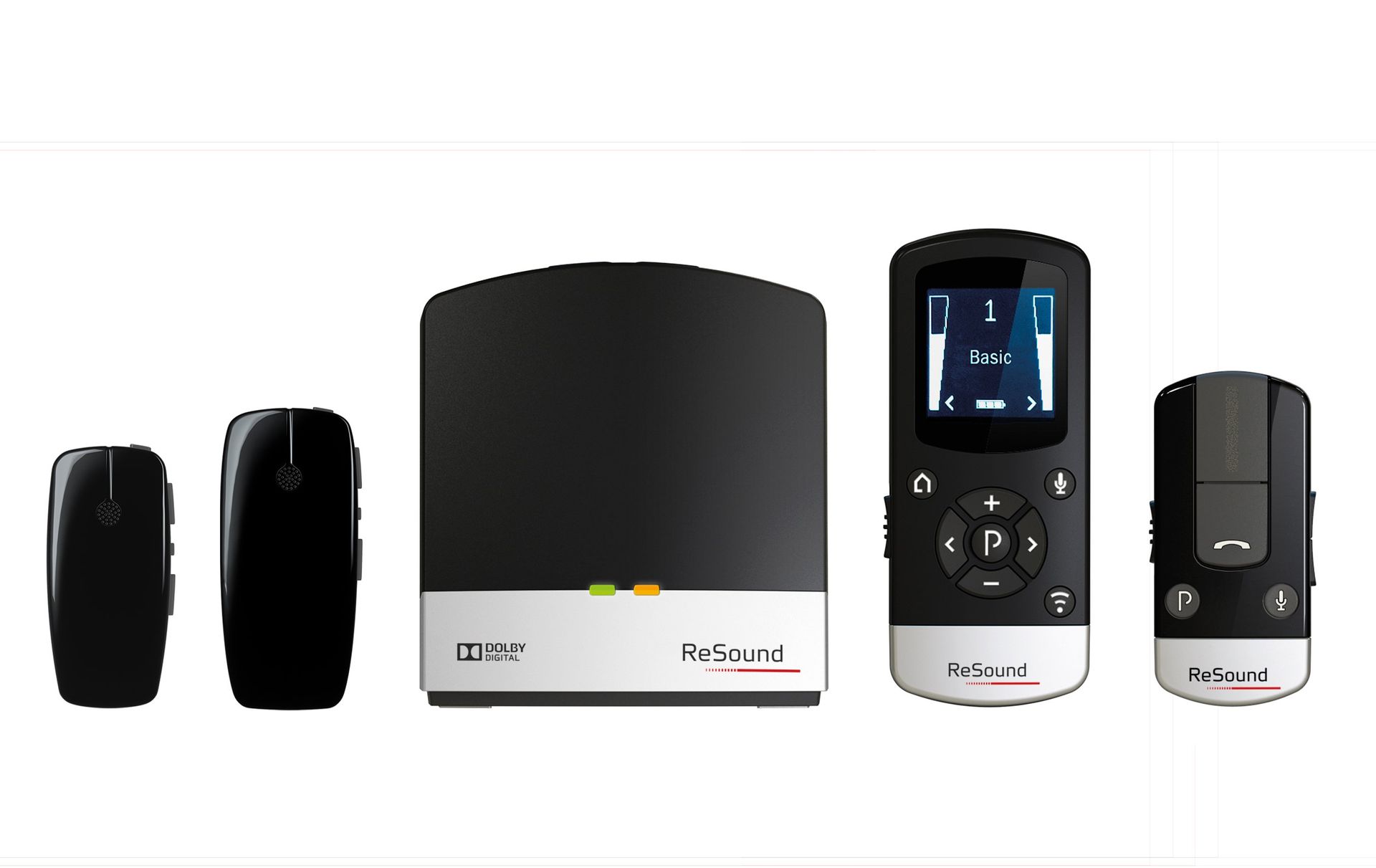Hearing Aid Solutions
Hearing Aid Styles
Hearing aids come in different shapes and sizes, including behind-the-ear styles and custom in-the-ear styles. Some styles are more appropriate for different types or degrees of hearing loss.
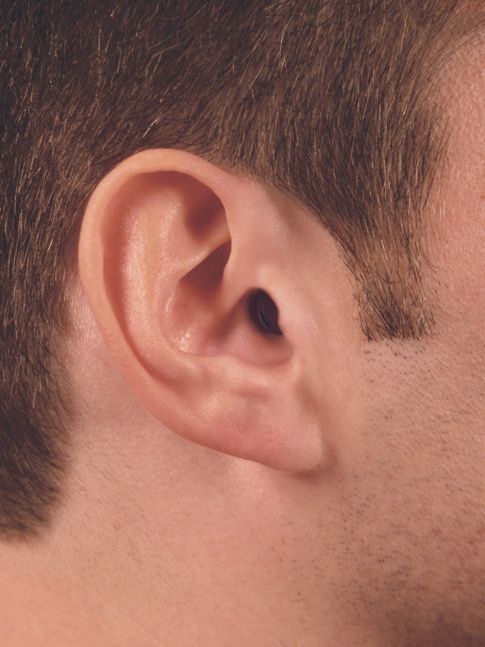
Invisible-in-Canal (IIC)
Invisible-in-Canal (IIC) hearing aids fit deeply into the ear canal and require an impression nearly to the eardrum. When properly inserted, these hearing aids will hide in the shadow of the ear canal and are virtually invisible. These are most appropriate for those with mild to moderate hearing loss and will fit about half of the population due to varied ear canal sizes and shapes.
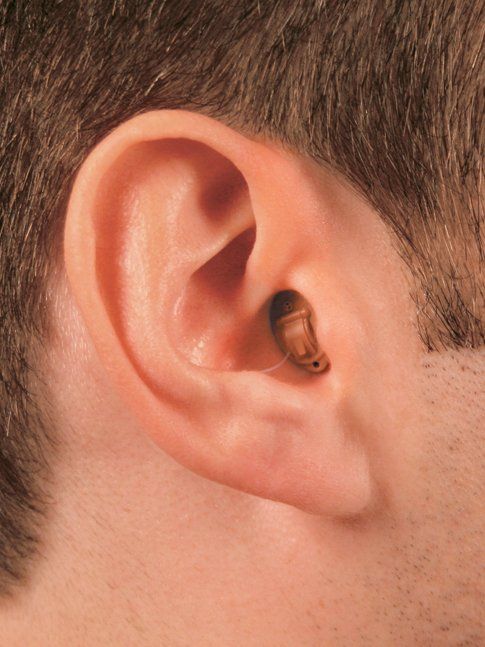
Completely-in-Canal (CIC)
Completely-in-Canal (CIC) hearing aids fit deeply into the ear but are visible at the entrance of the canal. They are appropriate for many degrees of hearing loss and are able to be made to fit most ears. Smaller instruments typically require more user maintenance and good dexterity due to the small battery size.
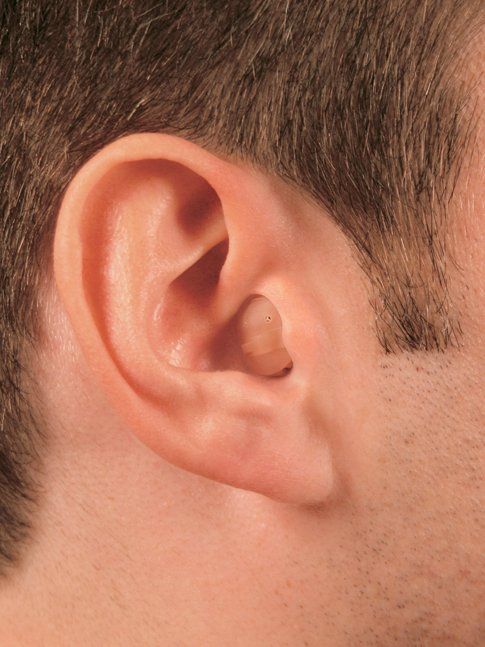
In-the-Canal (ITC)
In-the-Canal (ITC) hearing aids are slightly larger than CIC aids but typically offer a larger battery, user controls, and dual microphones. Dual microphones can offer better hearing in noise due to their ability to listen in different directions. These are appropriate for those with many degrees of hearing loss and can be made to fit most ears.
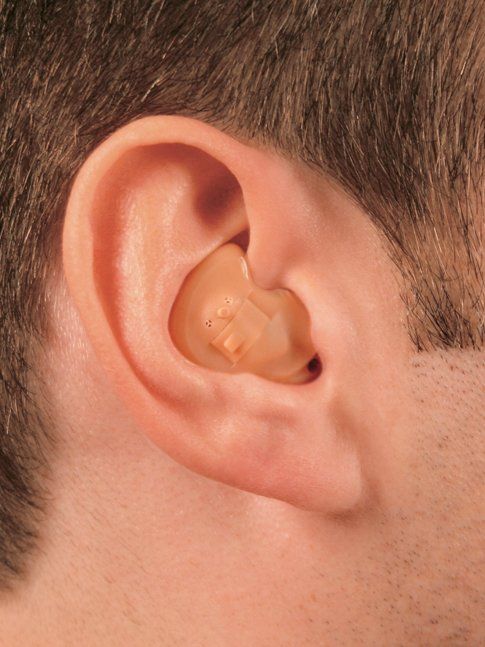
In-the-Ear (ITE)
In-the-Ear (ITE) hearing aids are the largest custom hearing aids and offer the largest battery, larger user controls, and dual microphones. They can be made to fit most ears and can accommodate any degree of hearing loss. Users of these aids often need the larger controls or battery size due to dexterity or the larger size due to the more severe degree of hearing loss.
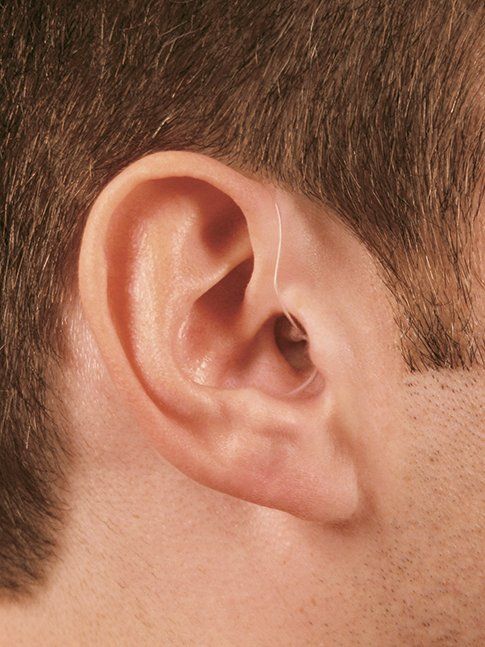
Receiver-in-the-Canal (RIC)
Receiver-in-the-Canal (RIC) hearing aids are a behind-the-ear hearing aid that couples into the ear canal with either a stock dome or a custom earmold. These hearing aids can be fit to any degree of hearing loss by utilizing different strengths of speakers and different domes or earmold sizes. These hearing aids are flexible in programming and may have different controls or battery sizes depending on the manufacturer.
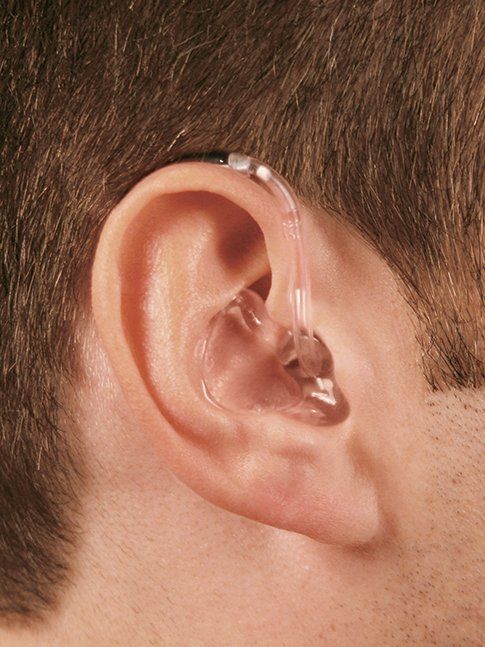
Behind-the-Ear (BTE)
Behind-the-Ear (BTE) hearing aids fit behind-the-ear and couple into the ear canal with a traditional earmold. These hearing aids come in different power levels and can be fit to any degree of hearing loss, including profound loss. These aids are also flexible in programming and controls and battery size will vary slightly depending on the manufacturer.
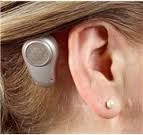
Bone-Anchored-Hearing-Aids (BAHA)
Bone-Anchored-Hearing-Aids (BAHA) are a surgically implantable device that is available for Single Sided Deafness (SSD) or conductive or mixed hearing loss. These devices are obtained via consultation with an otologist or otolaryngologist.
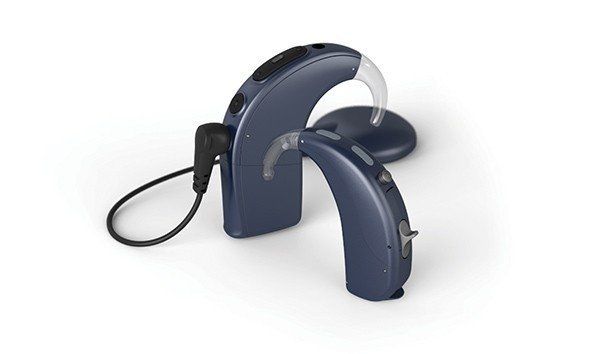
Cochlear Implants
Cochlear Implants are a surgically implantable device that is appropriate for those with severe to profound sensorineural hearing loss. Candidates have had a trial period with appropriately fit hearing aids. These devices are obtained via consultation with an otologist or otolaryngologist.
Hearing Aid Technology
Hearing aids come in a variety of shapes and sizes, but they also have differences in the computer chips that process sound. People have different lifestyles, some quieter than others.
For those with quiet lifestyles that do not require more advanced noise reduction and sound processing, basic hearing aids are available at a lower cost.
Most people have lifestyles with varied types of noise in the background, from conversation in a restaurant to small groups of family members at home, television, church settings, and outdoors. More advanced technology is available with features that can help reduce the level of background noise, reduce listening effort, improve speech clarity, and connect to other wireless devices such as iPhones, television accessories, and remote microphones.
Some hearing aids have the option of a rechargeable battery, accessories for the telephone, television, or group conversation. Dr. Finch will talk to you about what level of technology and accessories would best meet your listening needs.
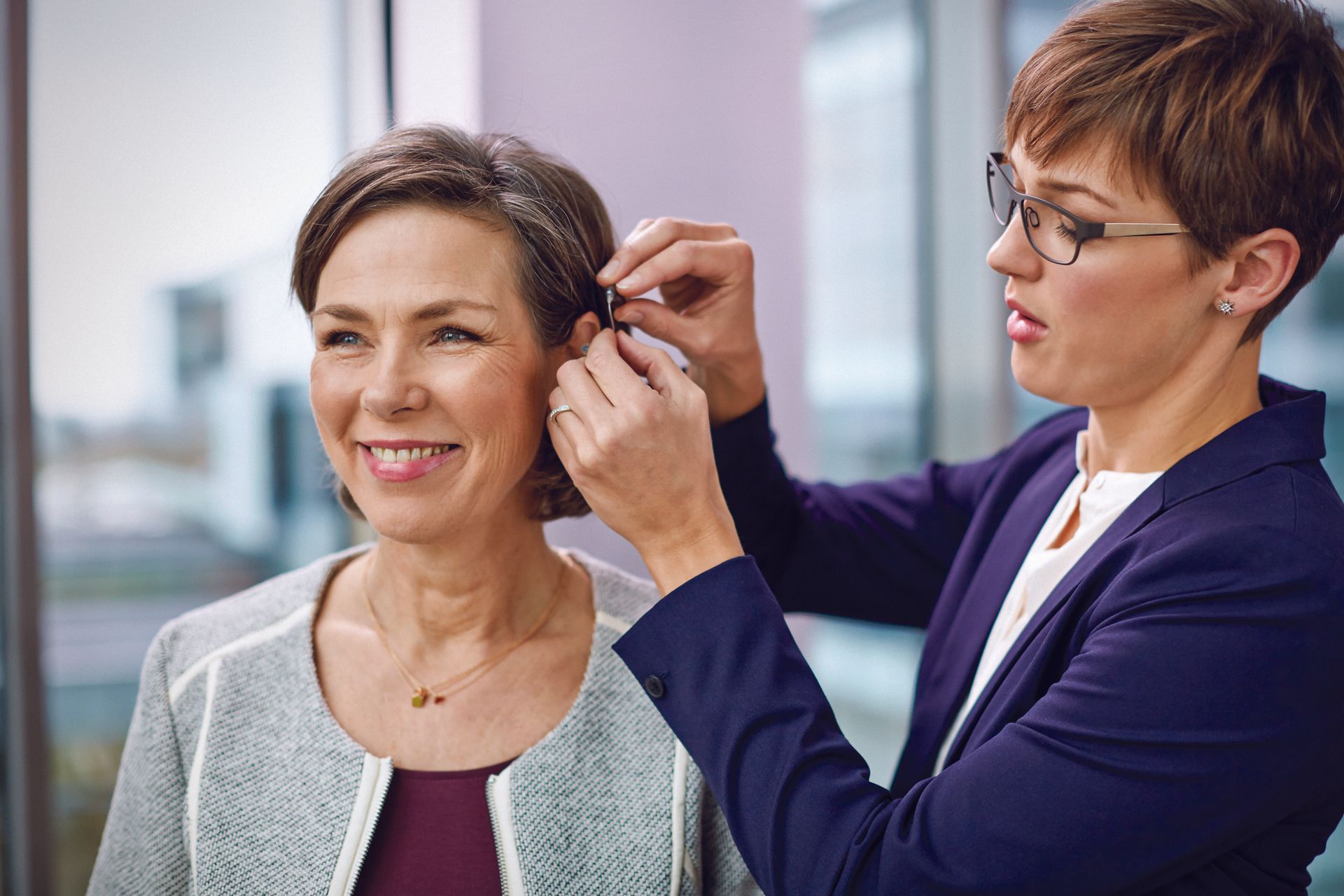

Hearing Aid Accessories
Hearing aid technology has advanced significantly over the past few years. A popular feature that is standard in most hearing aids is a wireless antennae. This antennae allows the hearing aids to communicate with each other to measure background noise and input levels, but it also allows the hearing aids to communicate with external devices such as televisions, tablets, telephones, and remote microphones.
Examples of some of these accessories include remotely placed micrphones, television streamers, cell phone streamers, landline phone accessories, and hearing aid remote controls.
FM systems are also an option for those with more significant listening challenges in background noise. These are commonly used for school-aged children but are available for adults as well.
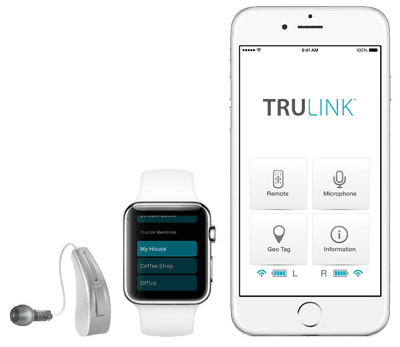
Assistive & Alerting Devices
Assistive devices for listening to television and talking on landline phones are commonly used for patients with and without hearing aids. Some talk directly to your hearing aids and others are available to be used with headphones.
Alerting devices are for safety. There are devices for smoke detectors, doorbells, telephone ringers, and alarm clocks. There are even devices that can connect to baby monitors.
Hearing Aid Care
Taking care of your hearing aids is important. Like maintenance on your car, regular check ups with your audiologist are needed to keep your hearing aids performing at their best. We typically recommend that you see your audiologist 2-3 times per year. These appointments should include a deep cleaning of your instruments, inspection to catch any potential problems, inspection of your ear canals to check for cerumen build up, and review of your success with the hearing instruments. At these appointments, adjustments to the sound quality and loudness can be made as well.
Daily cleaning and maintenance is required and batteries are changed approximately once per week. Smaller hearing aids have smaller batteries that may only last 3-4 days.
Cleaning tools are provided with new hearing aids and are available in our office as well. We recommend the use of a desiccant jar to minimize the effects of moisture on your hearing aids.
Behind-the-ear hearing aids with ear molds will require tubing changes a few times per year.

